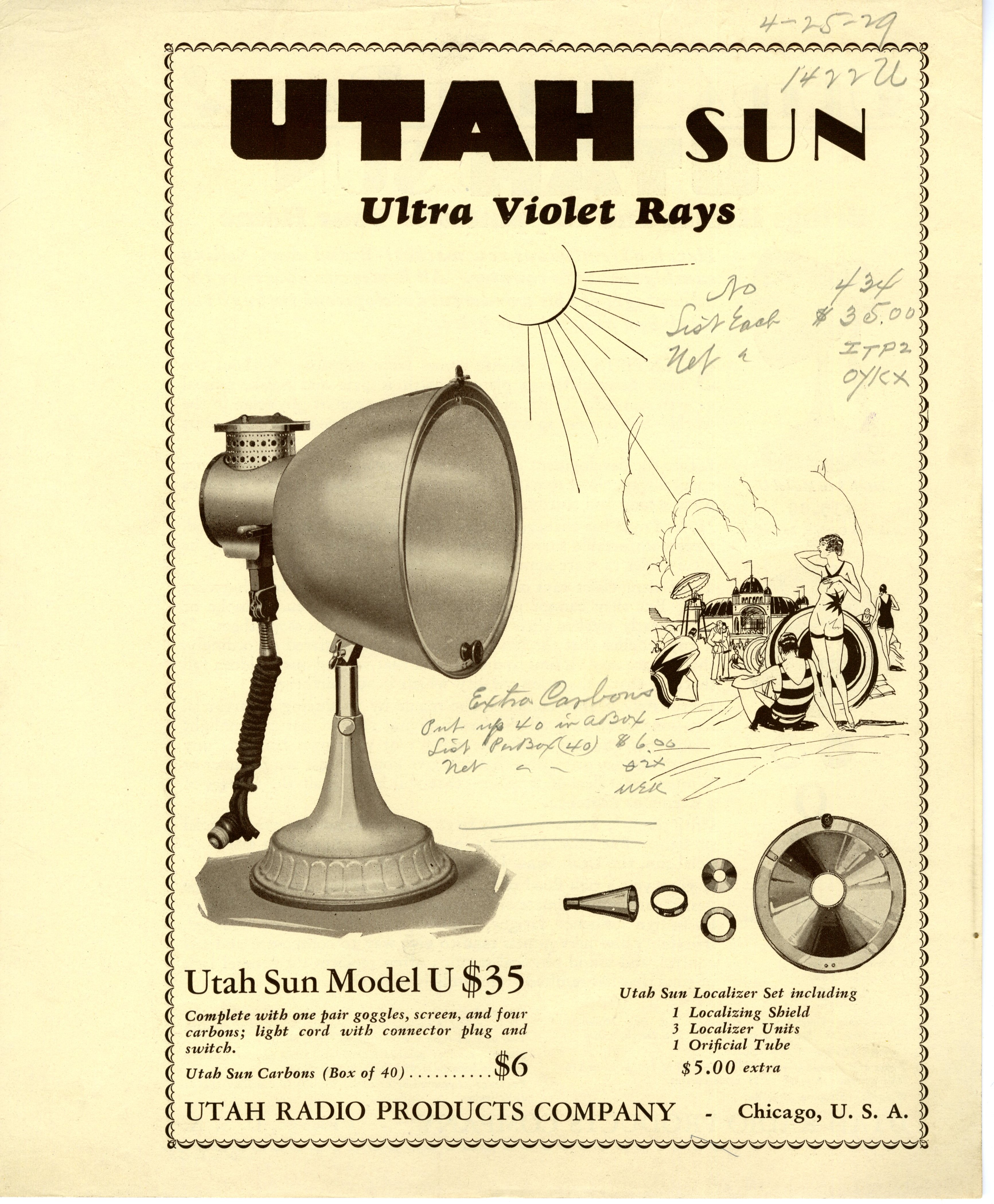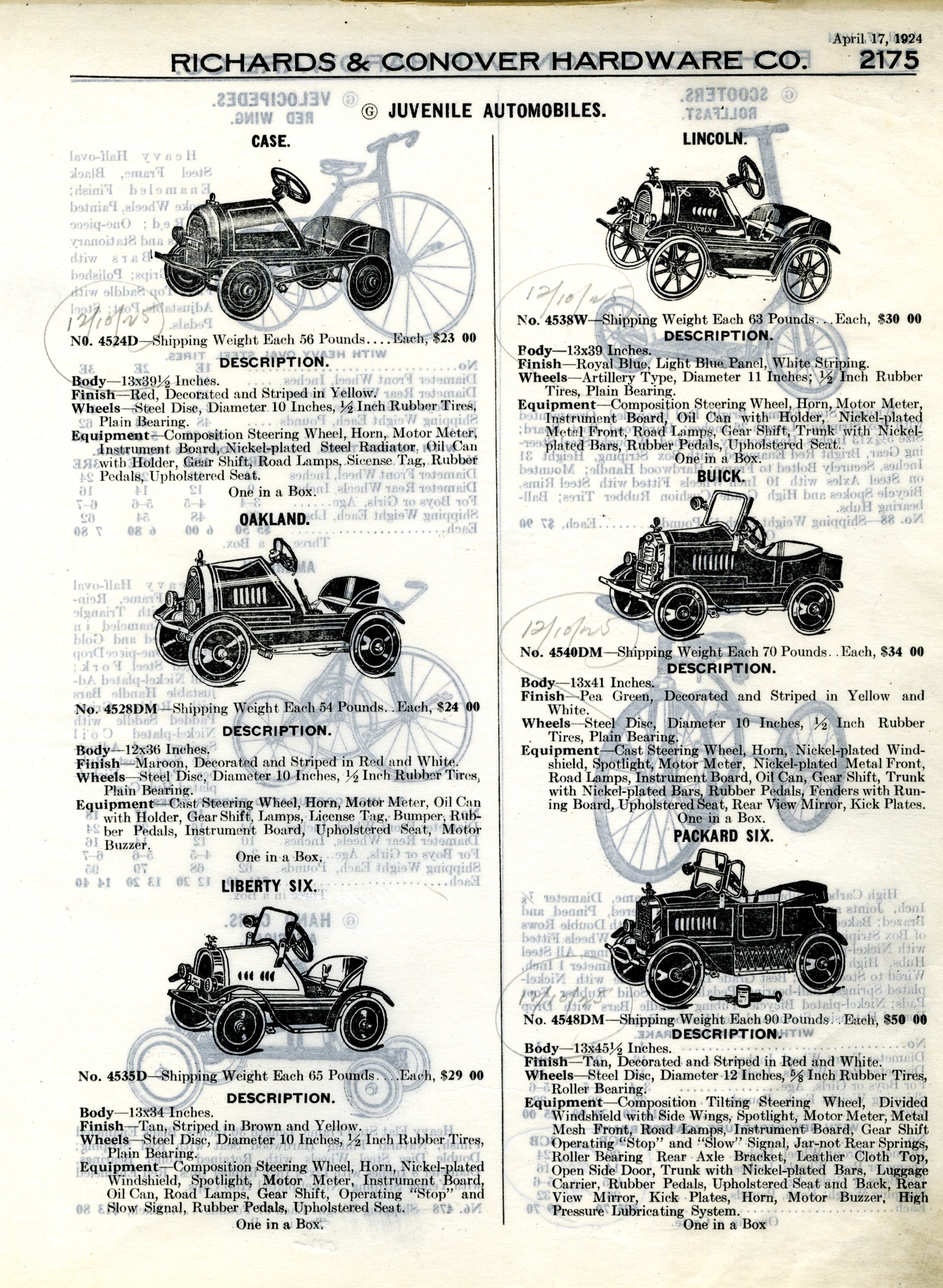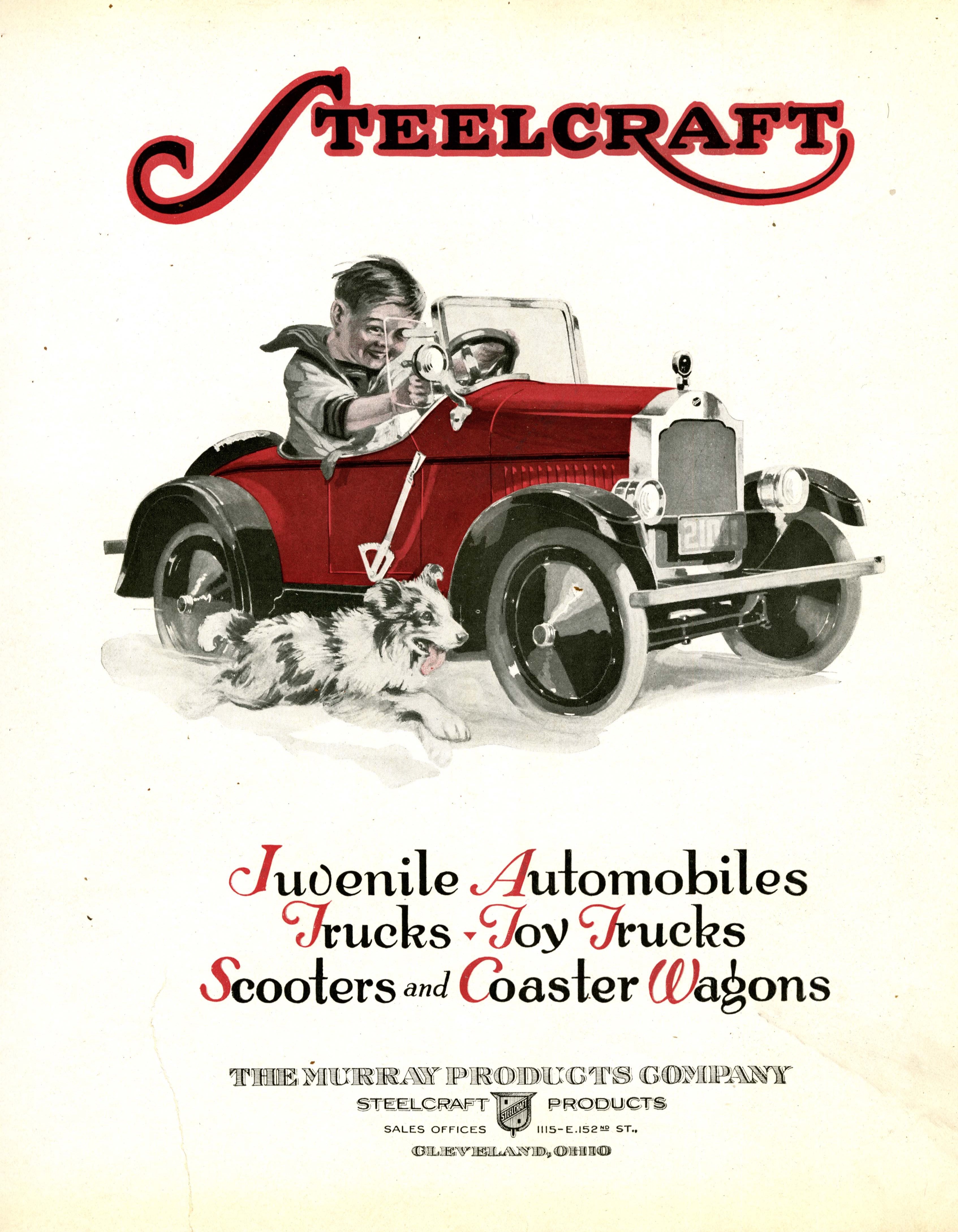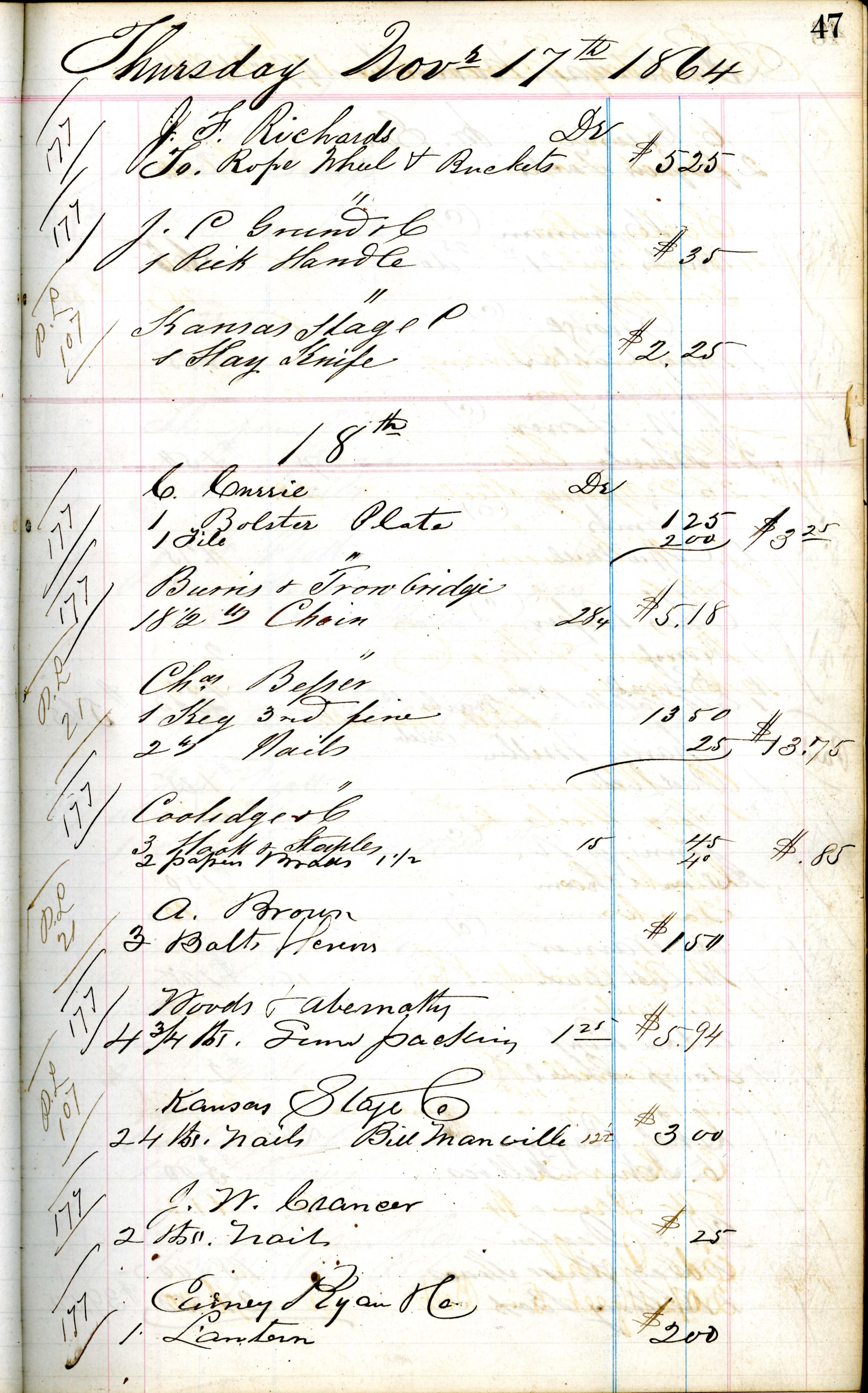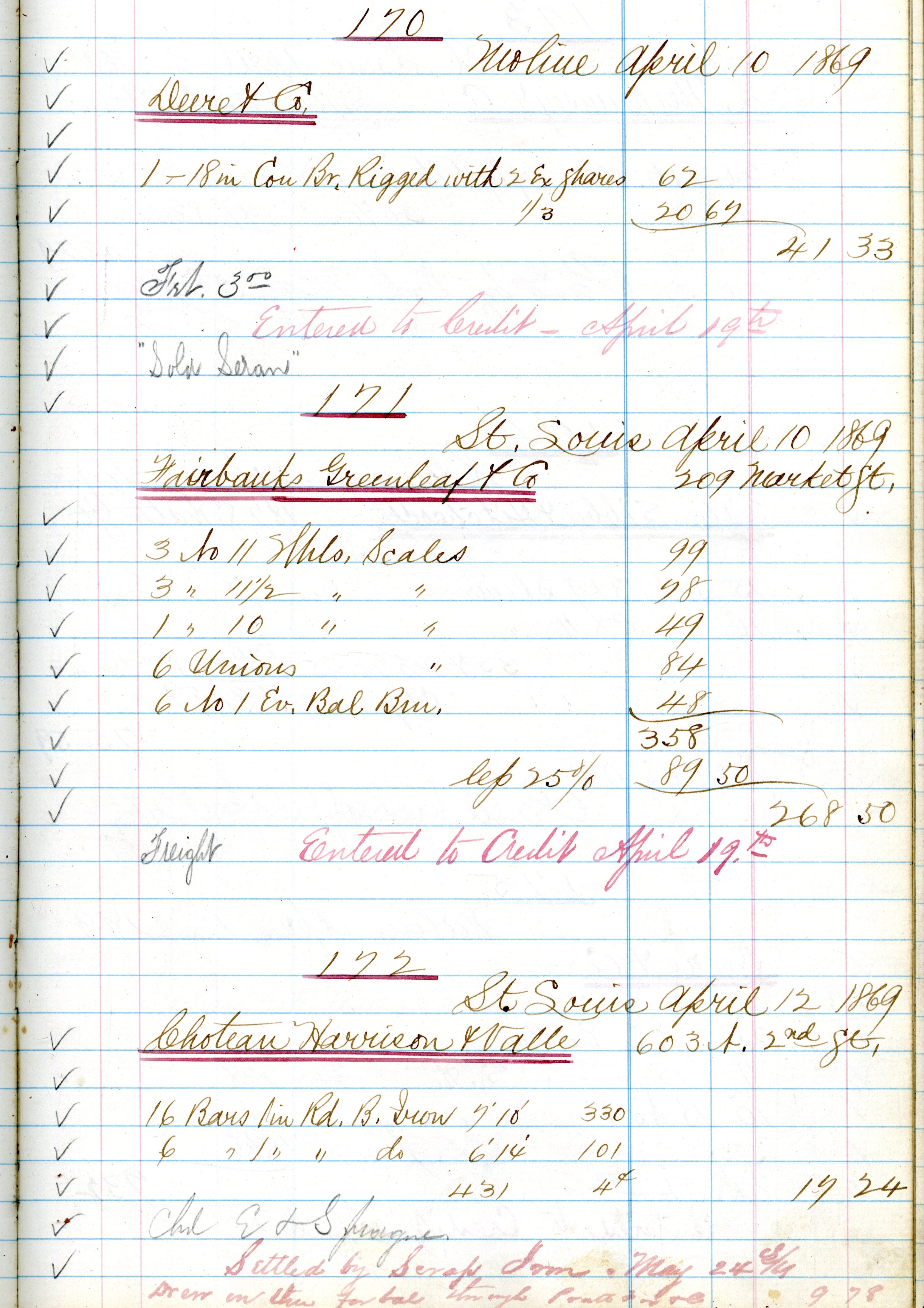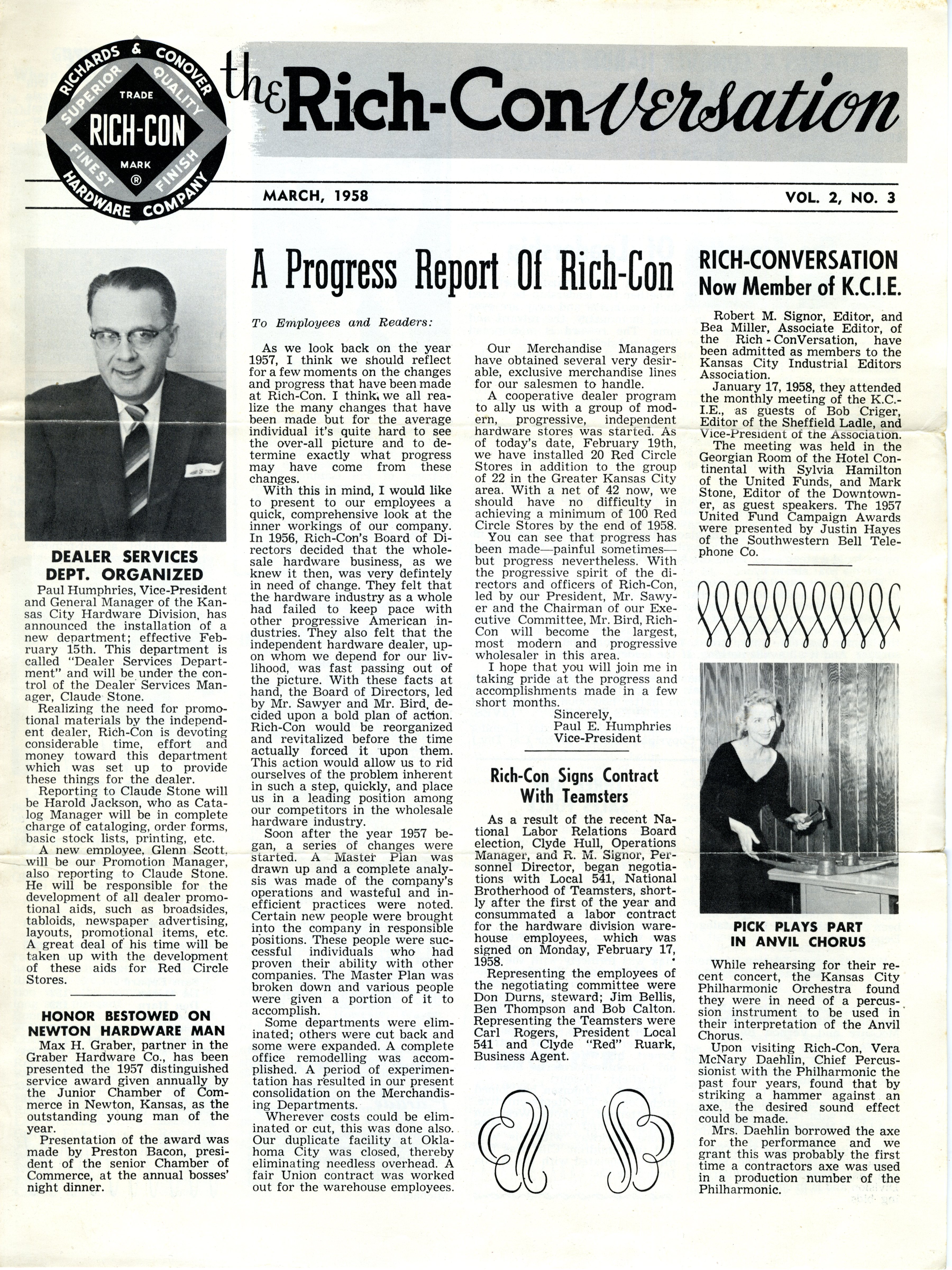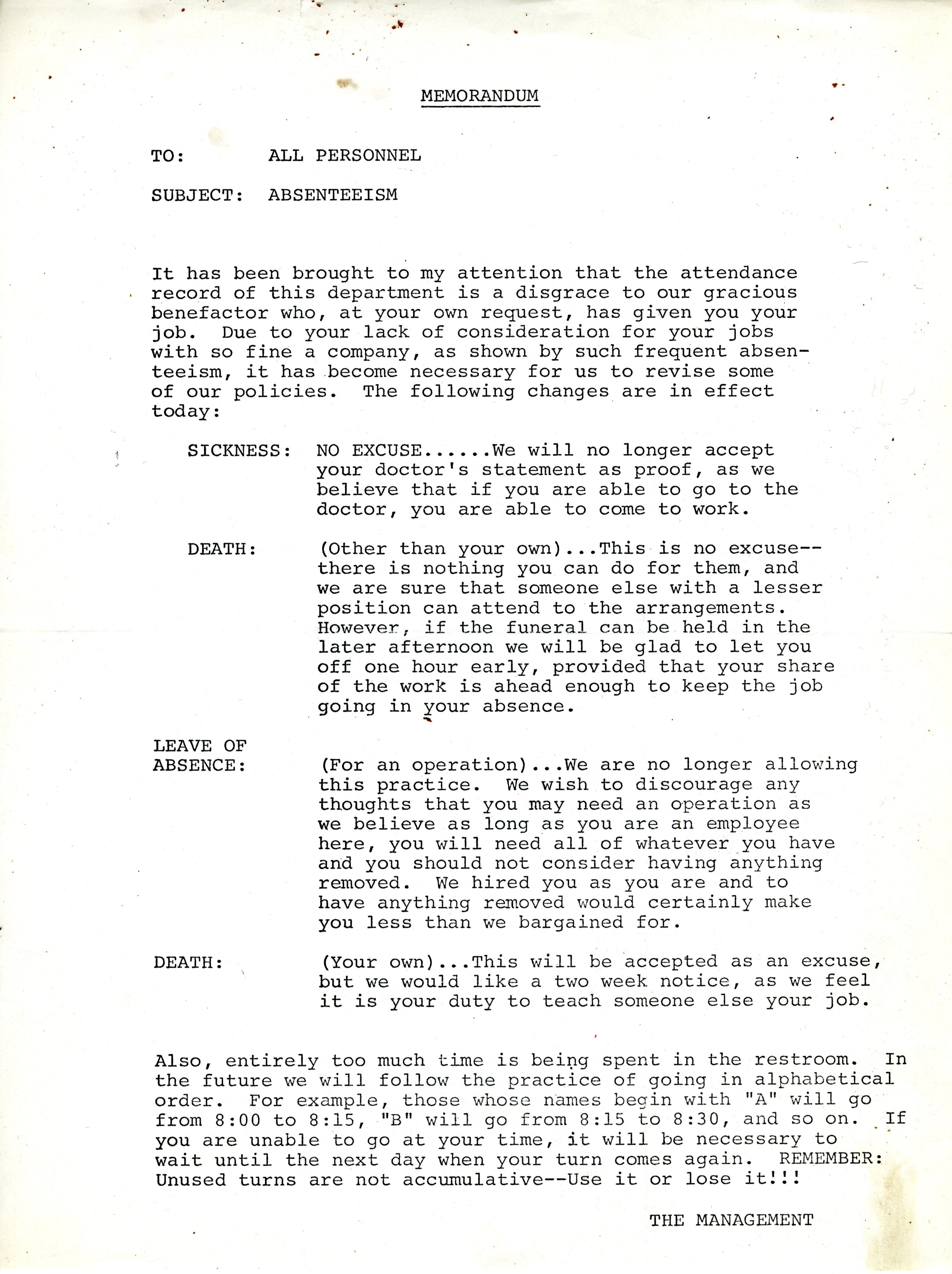This series of items comes from the recently processed SC193 Richards & Conover Hardware Company Collection. The wholesale hardware company was started by John Francisco Richards in Leavenworth, Kansas, in 1857.
Richards was a smart and calculating businessman who took note of how cities in the area were evolving. He saw local developments such as the opening of the Hannibal Bridge in 1869 and growth of the railroads and stockyards as indicators of future prosperity. Realizing that Kansas City’s industrial and commercial potential would soon surpass that of Leavenworth, he moved his business in 1857 to Kansas City, where it continued to prosper and expand.
By the 1950s, the market for wholesalers began to change and the hardware company adapted. Those in charge at Richards & Conover decided to refocus their business strategy on steel distribution, opening a new warehouse at 6333 St. John Avenue and closing the hardware business. When the company itself closed in 1999 due to a faulty new software system and changes in the steel market, it could attest to being one of the longest continually operating family owned businesses in Kansas City with five generations of the Richards family having been involved.
Throughout its 145 years, Richards & Conover occupied several buildings. But its location at Fifth and Wyandotte, where it operated for over 75 years, is still standing today with the company’s name as a “ghost sign” reminding onlookers of the old brick building’s origins. This collection documents a large portion of the company’s business proceedings, publications, and internal structure.
Catalogs like this one for 1955-1958 one were used by salesmen to advertise everything from garden supplies, mechanical tools, flooring, and kitchen items to children’s toys, sporting goods, and suitcases.
This advertisement in the 1926-1929 catalog features the Utah Sun, a light fixture for “bestowing all the health-giving rays of natural sunlight.” Using ultra-violet rays, the lamp “gives you a rich flood of pure, intense sunshine every day in the year regardless of climate or location whenever you want it.” Light therapy became a popular method of curing many ills in the late 1920s, as can be seen from this pitch for “selling sunshine over the counter.”
These pages from an early 1920s catalog show children’s toy vehicles. The cars were constructed with automobile steel and sold for $20-$50.
Among the great resources this collection offers researchers are ledgers recording the sales, purchases, and inventories of the company’s business transactions. These ledgers show who the Richards & Conover Company was doing business with, what was purchased and sold, and dates of transactions.
Along with business material, there also are items documenting the lives involved in the family business. Correspondence details not only professional dealings but also the interpersonal relationships that were cultivated through a well-run business. In the letter below to Edward Simmons of the Simmons Hardware Company, John F. Richards writes that “in my two grandsons we have been looking for a third generation of hardware men in the family.” He worries, however, that “with John F. Second, George’s son(,) in the Aviation in France and his second son reaching his majority in a few years, it is hard to say if this terrible war will leave them to me.” John F. Richards II, for whom Richards-Gebaur Air Force Base and Kansas City’s first air terminal, Richards Flying Field, were named, was indeed killed in action during World War I.
The company’s employee newsletter, the “Rich-Conversation,” contained information about the activities of the employees and gave updates on what was happening at the warehouse. It is unknown how long the newsletter was published, but this collection includes some issues from 1957-1958.
A series of office memos from 1964-1991 also provides insight into the people who worked for the company. While most of the letters are about business-related issues, some clearly were typed up by an employee with a sense of humor (see below).
The finding aid for this collection is available online at www.kchistory.org. For more information about this collection, please contact the Missouri Valley Special Collections at 816-701-3427 or lhistory@kclibrary.org.



